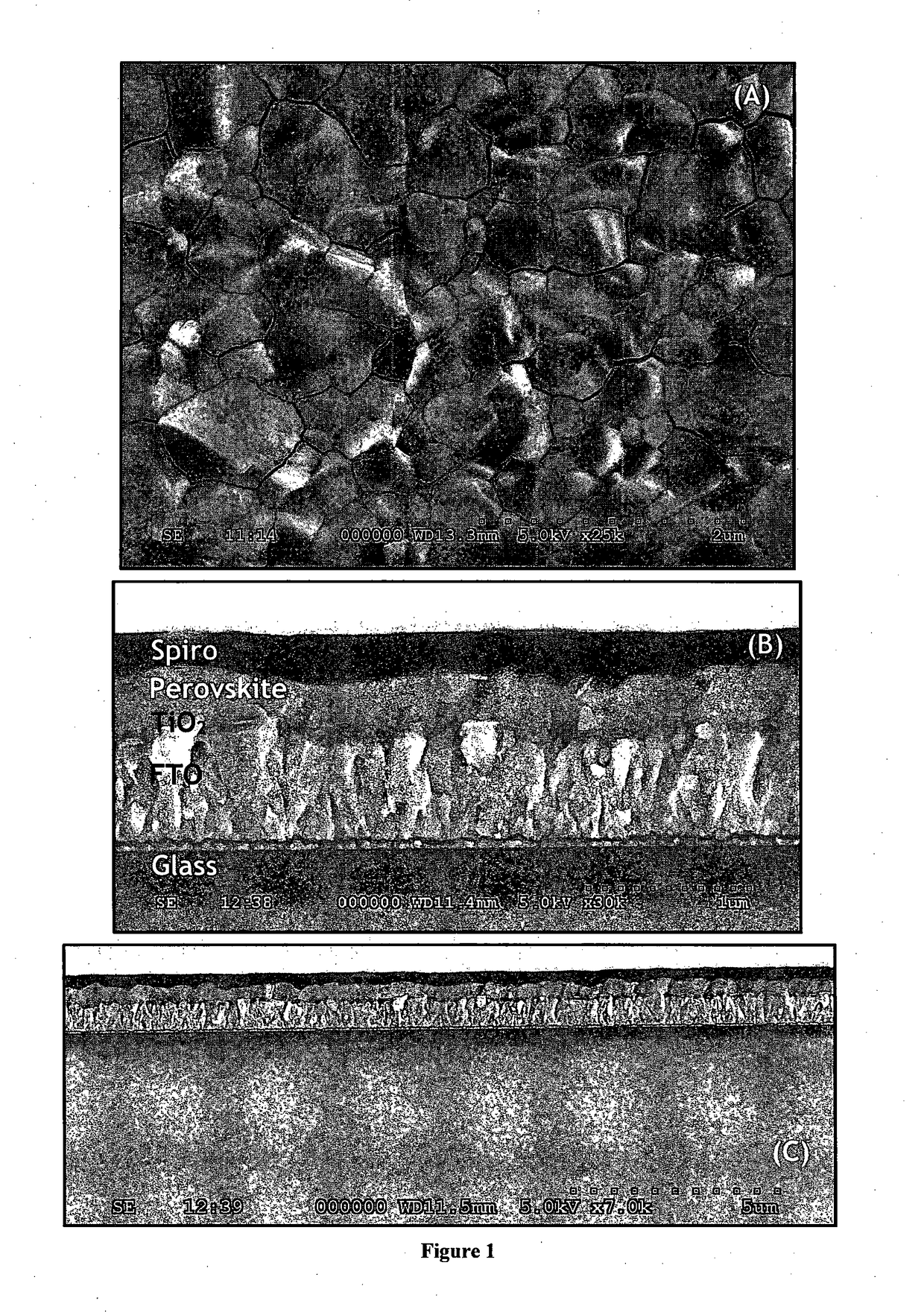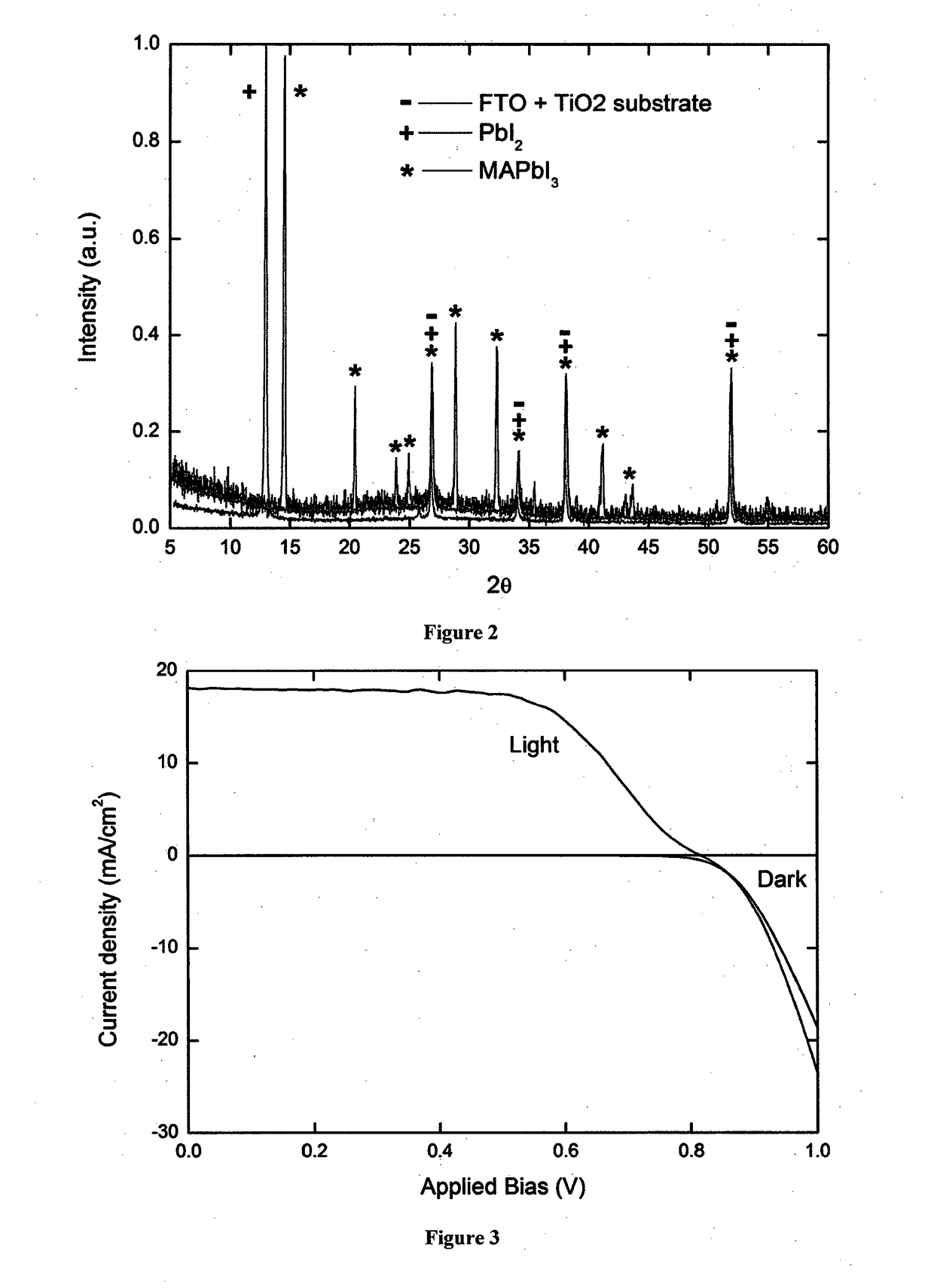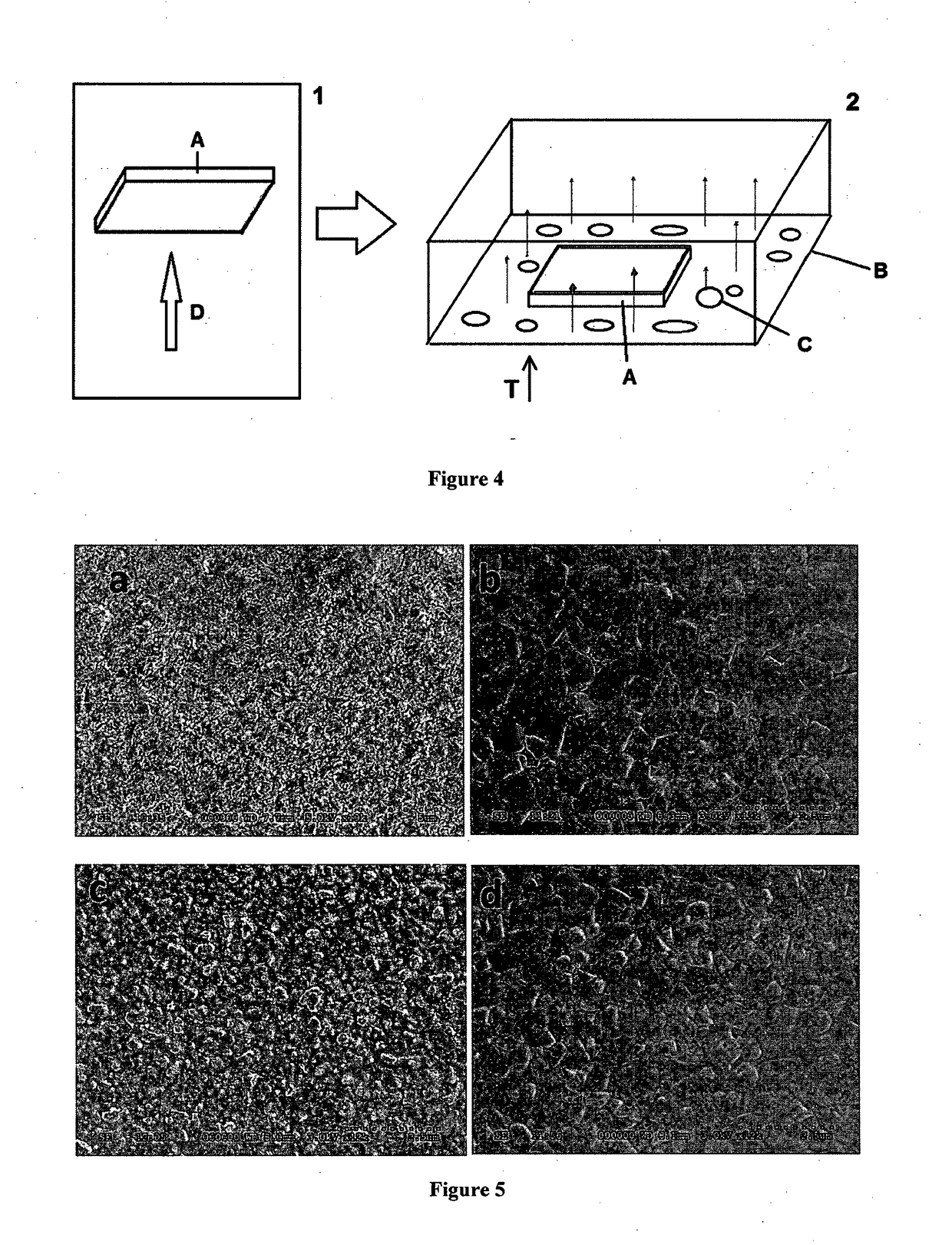Two-step deposition process
a deposition process and two-step technology, applied in the direction of sustainable manufacturing/processing, final product manufacturing, electrolytic capacitors, etc., can solve the problems of high risk of human error, non-uniform films or films with pinholes, and high risk of micro-seismic dust on the substrate of spin-coating, etc., to achieve high purity, high quality, and high quality
- Summary
- Abstract
- Description
- Claims
- Application Information
AI Technical Summary
Benefits of technology
Problems solved by technology
Method used
Image
Examples
example 1
[0254]A photovoltaic device comprising a layer of a methylammonium lead iodide perovskite was produced by the following procedure which includes the two-step vapour / vapour deposition method according to the invention. FTO glass was first cleaned before being spin-coated with an electron selective layer of TiO2 having a thickness of approximately 50 nm. A layer of lead diiodide (PbI2) was then evaporated onto the electron selective layer at a pressure of approximately 5×10-6 mbar and a rate of 0.2 nm / s until a layer of PbI2 having a thickness of from 250 to 300 nm was formed. The sample comprising the PbI2 layer was then transferred through a lab atmosphere to a nitrogen filled glovebox. The sample was put in a covered glass container at atmospheric pressure together with methylammonium iodide (MAI, CH3NH3I) and the container was heated to 150° C. The substrate and the MAI powder were held at the same temperature for 2 hours. The PbI2 layer was converted to methylammonium lead iodide...
example 2
[0258]Layers of lead iodide (PbI2) were produced by either spin-coating a solution comprising PbI2 (comparative) or by vacuum evaporating PbI2 at a pressure of approximately 5×10-6 mbar (the invention). These layers were then exposed to a sublimed vapour of methylammonium iodide (MAI) at approximately atmospheric pressure for 90 minutes by placing the PbI2 layers in a heated sealed container with MAI powder. FIG. 5 shows SEM images of top-views of the produced layers. FIG. 5(a) shows a top-view SEM of a spin-coated PbI2 surface. FIG. 5(b) shows a top-view SEM of a methylammonium lead triiodide surface produced by exposing the spin-coated PbI2 surface of FIG. 5(a) to the vapour of MAI. FIG. 5(c) shows a top-view SEM of an evaporated PbI2 surface. FIG. 5(d) shows a top-view SEM of a methylammonium lead triiodide surface produced by exposing the evaporated PbI2 surface of FIG. 5(c) to the vapour of MAI.
[0259]The conversion of the spin-coated layer of PbI2 to CH3NH3PbI3 can be seen in F...
example 3
[0262]A two-step process was used to produce other perovskite materials. Methylammonium tin iodide was produced by converting a spin-coated layer of tin iodide in a methylammonium iodide (MAI) atmosphere. The partial conversion of the layer of SnI2 to CH3NH3SnI3 is shown in FIG. 10 which shows the XRD patter of SnI2 alone and after 15 exposure to an MAI atmosphere. Perovskite peaks are marked with a *.
[0263]FIGS. 11, 12 and 13 show XRD patterns of copper based materials produced using a spin-coated metal halide / vapour deposited organic method. Exposure to the atmosphere of the nitrogen containing component was for approximately 90 minutes. FIG. 11 shows the XRD of a perovskite produced by exposing a spin-coated layer of CuBr2 to an atmosphere of methylammonium chloride. FIG. 12 shows the XRD of a perovskite produced by exposing a spin-coated layer of CuCl2 to an atmosphere of methylammonium chloride. FIG. 13 shows the XRD of a perovskite produced by exposing a spin-coated layer of C...
PUM
| Property | Measurement | Unit |
|---|---|---|
| Temperature | aaaaa | aaaaa |
| Temperature | aaaaa | aaaaa |
| Temperature | aaaaa | aaaaa |
Abstract
Description
Claims
Application Information
 Login to View More
Login to View More - R&D
- Intellectual Property
- Life Sciences
- Materials
- Tech Scout
- Unparalleled Data Quality
- Higher Quality Content
- 60% Fewer Hallucinations
Browse by: Latest US Patents, China's latest patents, Technical Efficacy Thesaurus, Application Domain, Technology Topic, Popular Technical Reports.
© 2025 PatSnap. All rights reserved.Legal|Privacy policy|Modern Slavery Act Transparency Statement|Sitemap|About US| Contact US: help@patsnap.com



